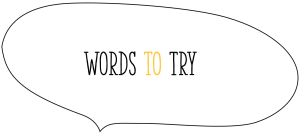15 Crime and Prisons
Rebecca Yoshizawa
 It may not be obvious at first that crime is gendered. However, dominant gender ideology plays a major role in the definitions, causes, and consequences of crime. Some crimes are clearly gendered, such as sexual assault and intimate partner violence. Women are more likely to experience violent victimization than men.[1] We can observe that men are incarcerated at a higher rate than women. In Canada, men are more likely to be found guilty of a criminal charge than women.[2] Prison is a masculine space where masculinist values like control, domination, aggression, and violence are normative. Male and female prisons are separate institutions, so this reinforces dominant gender ideology while also putting non-binary, trans, queer, and others who do not fit within that circumscription in a dangerous environment. Prisoner-on-prisoner violence is a pervasive problem, while prison workers such as guards have perpetuated assaults on prisoners. The violence, deprivation, and indignity of prison reminds us that patriarchy is also harmful to men.
It may not be obvious at first that crime is gendered. However, dominant gender ideology plays a major role in the definitions, causes, and consequences of crime. Some crimes are clearly gendered, such as sexual assault and intimate partner violence. Women are more likely to experience violent victimization than men.[1] We can observe that men are incarcerated at a higher rate than women. In Canada, men are more likely to be found guilty of a criminal charge than women.[2] Prison is a masculine space where masculinist values like control, domination, aggression, and violence are normative. Male and female prisons are separate institutions, so this reinforces dominant gender ideology while also putting non-binary, trans, queer, and others who do not fit within that circumscription in a dangerous environment. Prisoner-on-prisoner violence is a pervasive problem, while prison workers such as guards have perpetuated assaults on prisoners. The violence, deprivation, and indignity of prison reminds us that patriarchy is also harmful to men.
Women are more likely to commit crimes that facilitate their subsistence, such as sex work and drug trafficking. Worldwide increases in the population of women in prisons is associated with increased policing and prosecution of drug trafficking. Women can also be incarcerated for events related to pregnancy, such as using street drugs while pregnant or seeking abortions in jurisdictions where it is illegal.
Crime is associated with masculinity and men, and in this way, when women engage in acts of a deviant nature labeled “criminal,” they are also deviating from gender norms. It is clear that prison systems are not designed to meet the needs of women. For example, women struggle with adequate access to resources and conditions to manage menstruation. Children can be born and live as infants in prison, and then removed from the care of their still-incarcerated mothers. Because women are tasked with the primary role of childcare in societies, and because many families are headed by single women, children with incarcerated mothers can struggle with having their needs met. Familial separation and trauma results from the incarceration of a parent.
Many people believe that crime is the cause of major social problems; however, activists and social scientists argue that it is oppression and inequality that are the real social problems. Strain theory suggests that if people cannot find sanctioned ways to meet their needs, they will turn to unsanctioned, or illegal, means. Because incarcerated people can experience violence, familial separation, deprivation, and denial of basic human rights, prison exacerbates social oppression. Indeed, vulnerable populations who have experienced marginalization through social inequalities are more likely to be overrepresented in prison populations, including impoverished, racialized, and Indigenous communities, and are thus more likely to experience the injurious and cyclic effects of incarceration.

Deviance: breaking of social norms
Strain theory: the argument that social conditions prevent people from meeting their needs, leading to stress that manifests in their turn to crime to meet their needs
Homophobic: prejudice against or dislike of gay people
breaking of social norms
the argument that social conditions prevent people from meeting their needs, leading to stress that manifests in their turn to crime to meet their needs
prejudice against or dislike of gay people

